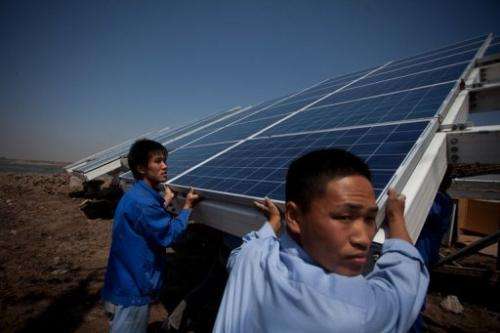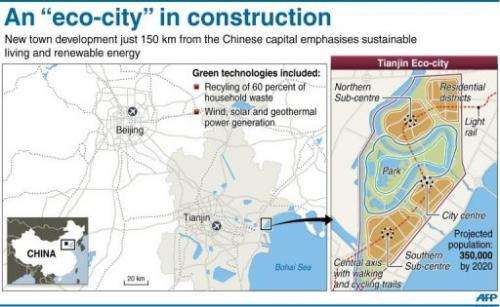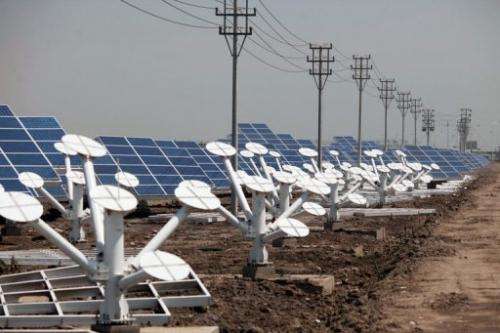China creates model for sustainable urban living

At first glance, Tianjin Eco-City looks much like any other upscale Chinese urban development, with its rows of identical apartment blocks, wide roads and manicured verges.
In fact, it is being touted as a model for sustainable living in this rapidly urbanising and heavily polluted country, whose congested, smog-choked cities are becoming increasingly unliveable.
Many of its features -- including well-insulated housing, waste recycling systems and solar-powered water heaters -- are common in other countries, but remain rare in China, where sustainability has lost out in the rush to develop.
Around 60 percent of household waste will be recycled and much of the city's electricity will come from renewable energy sources including wind, solar and geothermal power, while the transport system will rely on hybrid vehicles.
Construction work on Tianjin Eco-City, about 150 kilometres (95 miles) east of Beijing, began in 2008 and although it will not be completed until 2020, about 60 families have moved in this year.
They are the first guinea pigs in what the Beijing- and Singapore-backed project's deputy director Wang Meng calls an experiment to try to find ways for the country's cities to be run in a more sustainable way.

"In China, we have a very large population but we lack natural resources. The over-exploitation of those resources means that our cities cannot develop in a sustainable way," said Wang.
"The eco-cities are an experiment that is being conducted in that context. We are researching a sustainable approach to the industrialisation and urbanisation of the country through the eco-cities."
The new city, which will include schools, medical facilities and business districts, covers 30 square kilometres (11.6 square miles) of salt pans and former fishing villages near the busy industrial port of Binhai.
Wang said Tianjin Eco-City was deliberately sited on a heavily polluted patch of land with no access to fresh water, to prove that such projects could work anywhere.
Unlike other eco-cities, which are adapted from existing settlements, it is being built from scratch and will need to attract residents from nearby cities such as Beijing and Tianjin, about 40 kilometres away.
Xie Kai, a 30-year-old entrepreneur who supplied the flooring for some of the new apartment complexes, moved to the city in March with his parents and young family after buying a flat at a preferential rate.

He says he was attracted by the city's eco-friendly credentials, but these were not the prime consideration -- business opportunities, transport and education facilities for his young son were also important.
"Education and transport are two big strong points here. You are near Beijing, which is only 100 kilometres away, and Tianjin is a big city that has very good educational facilities," he told AFP.
"You are also living somewhere where they look after the environment, there are lots of green spaces... (But) I didn't move here just because it is an eco-city."
Tianjin Eco-City is not the first such project in China. In 2005, China and Britain agreed to collaborate on building the world's first so-called "eco-city" on an island off Shanghai.
Dongtan Eco-City was dubbed a "city of the future" and aimed to provide virtually carbon-neutral living for up to 10,000 people from 2010, when it was to have been showcased at the 2010 World Expo in Shanghai.
But the deadline slid amid claims of corruption after the ouster of Chen Liangyu, the former Shanghai Communist party chief who was convicted for graft in 2008, and the city has still not been completed.
Plans for dozens of other low-carbon "eco-cities" and towns are springing up around the country, as developers rush to cash in on the green movement and government authorities seek to attract foreign investors to their regions.
But as China's economy slows, it will take more than green credentials to attract buyers for eco-friendly housing -- as Wang is all too aware.
"At the moment, the media is following the project closely and so local people are coming 'round more and more to the green concept. The apartments are selling well," he said.
"The Binhai area of Tianjin is becoming the third most important centre of growth in China. The eco-city will attract more and more people who want to settle and work here."
(c) 2012 AFP


















